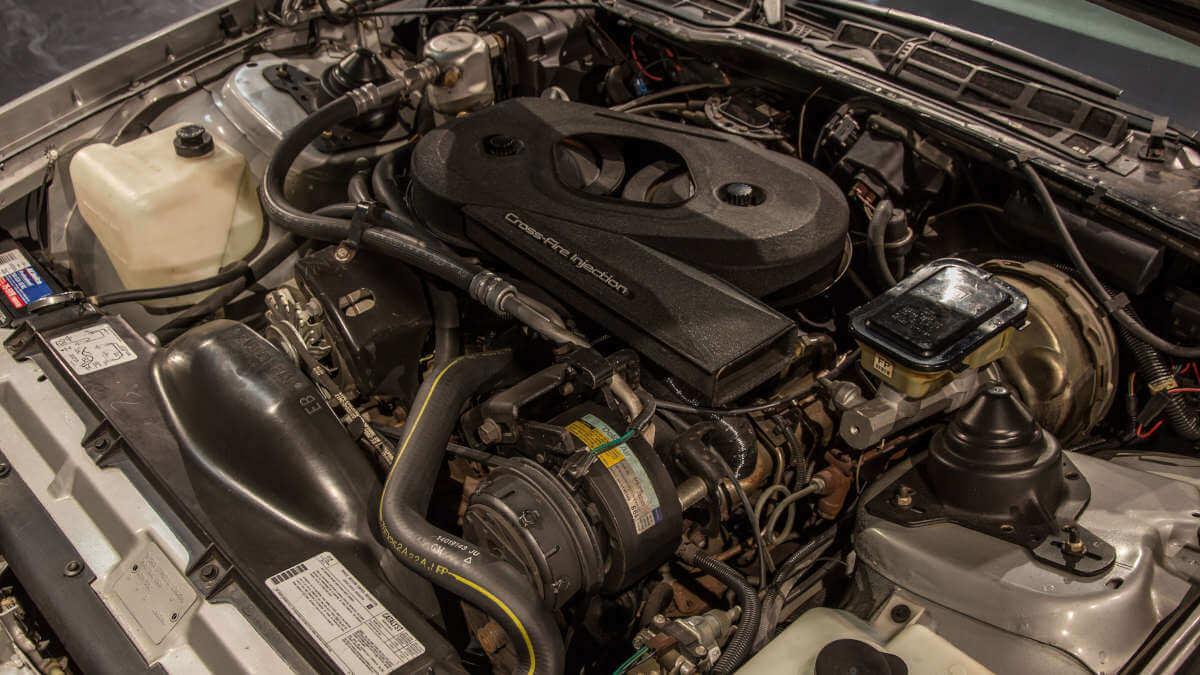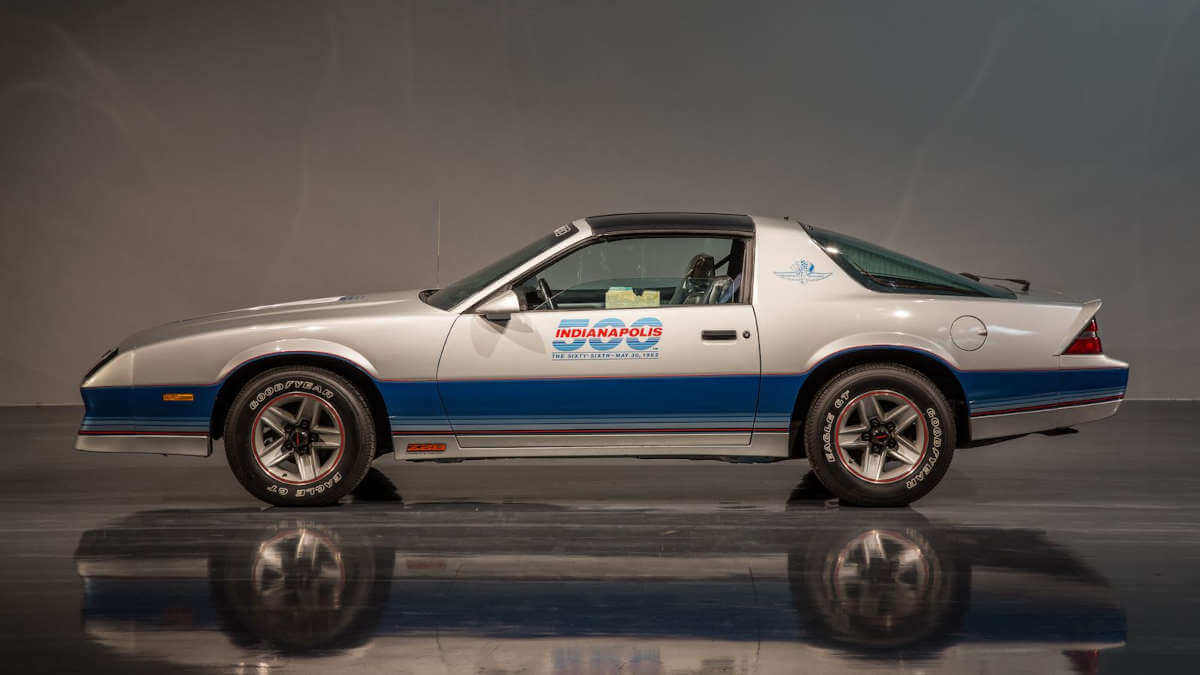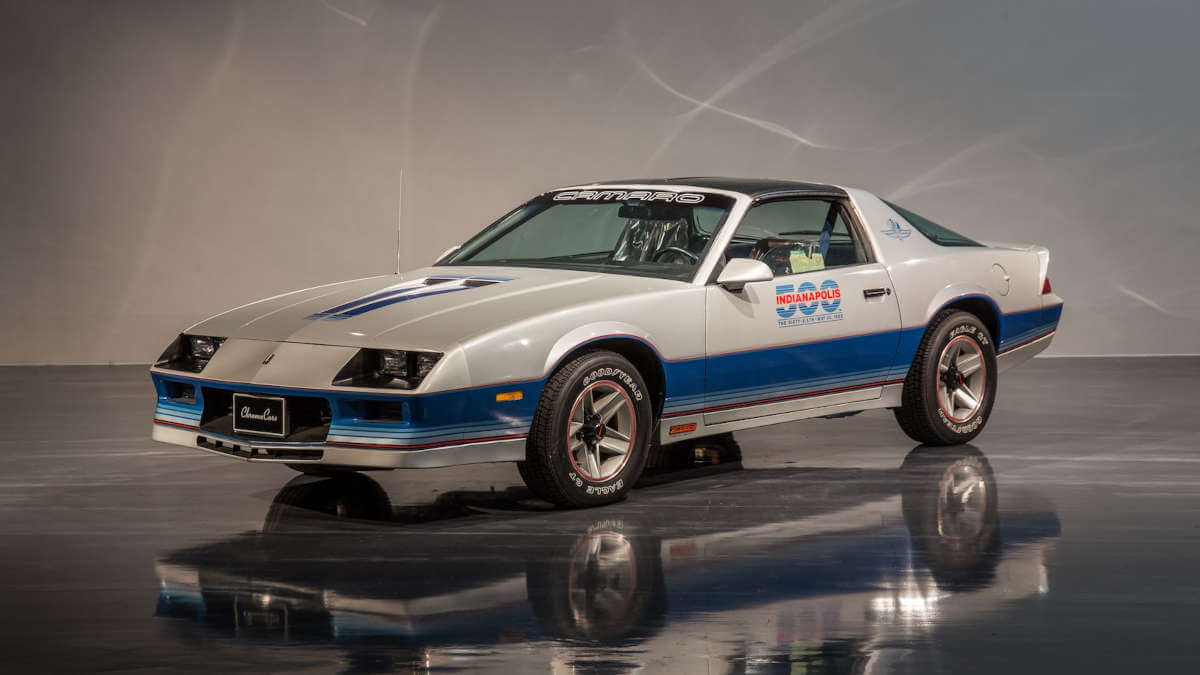Chevrolet Camaro Z28 Indy 500 PC Edition
In the 1982 model year, Chevrolet presented the third generation of the Camaro. The model designation of the sister model to the Pontiac Firebird comes from the French word “camarade” (comrade, friend). As with the first two model generations, this vehicle also used the F-body platform, which encompassed everything from the bulkhead below the windshield to the rear end. However, the chassis was upgraded with MacPherson struts at the front and coil springs at the rear rigid axle. For the first time, the designers broke through internal General Motors regulations, according to which the windshield was allowed to be at a maximum angle of 60 degrees. On the Camaro it was 62 degrees. The car also had a large, strongly curved rear window that opened together with the trunk lid. Underneath was a neatly dimensioned trunk that could be enlarged by folding down the rear seat.
Camaro Z28 as Indy 500 Pace Car
Due to the second oil crisis of 1979, Chevrolet offered this Camaro with a 2.5-liter four-cylinder powerplant with 90 SAE horsepower as the entry-level engine. Above that was a V6 engine with 2.8 liters of displacement and 102 SAE hp. A 5-liter V8 with 145 SAE hp initially served as the top engine. In the Z28, power increased optionally to 165 SAE hp with intake manifold injection. While the smaller model variants were available with either a manual four-speed transmission or three-speed automatic, the Z28 was only available with an automatic. Visually, the top model was distinguished from the other variants by an alloy hood with three functional air intake vents, a front spoiler lip, sporty side skirts, a three-piece rear spoiler and 15-inch instead of 14-inch wheels. The official Pace Car for the Indy 500 race was built on this basis in 1982. However, this one-off received a 5.7-liter V8 engine that didn’t go into production until later.








































Unusual speedometer unit until 1985
All Camaro versions apart from the Berlinetta trim showed one special detail. The speedometers had individual scales for mph and km/h, each with its own needles. A digital display was used on the Berlinetta. Shortly after the start of the 1983 model year, Chevrolet swapped the prone, 165-horsepower V8 engine for a similarly sized powerplant with 190 SAE hp. By 1984, the Z28 was finally available with a manual gearbox. Over the years, there were dashboard modifications, new body colors and other detail changes. For the 1985 model year, the new top-of-the-line IROC-Z (International Race of Champions) model debuted, which could also be ordered with 215 SAE hp from a 5.7-liter V8 engine beginning in early 1986. As with the Z28, the IROC-Z also featured a lower-reaching spoiler lip. The dual speedometer unit was now omitted. The four-cylinder engine also disappeared from the range for the 1986 model year. In 1987, a Camaro Convertible was introduced for the first time since 1969. The fourth generation was launched in 1993.
Pace Car edition was produced 6,360 times
In the USA, it is still customary today for a special limited edition of the Indy 500 Pace Car to be produced. Based on the Camaro Z28, a total of 6,360 units rolled into American Chevrolet dealerships. They all received a two-tone exterior in silver and blue with red trim strips, 15-inch alloy wheels and six-way adjustable sports seats. On the doors, the inscription “Indianapolis 500 – The Sixty-Sixth – May 30, 1982” provided a distinguishing feature. Chrome Cars from Jena, Germany, is currently offering one of these cars for sale. Amazingly, there are only 47 miles on the clock to date. The seats are still in the shipping wrap and there are some delivery papers stuck to the windows. This collector car could move into your garage for the price of € 60,000.
Images: Chrome Cars




